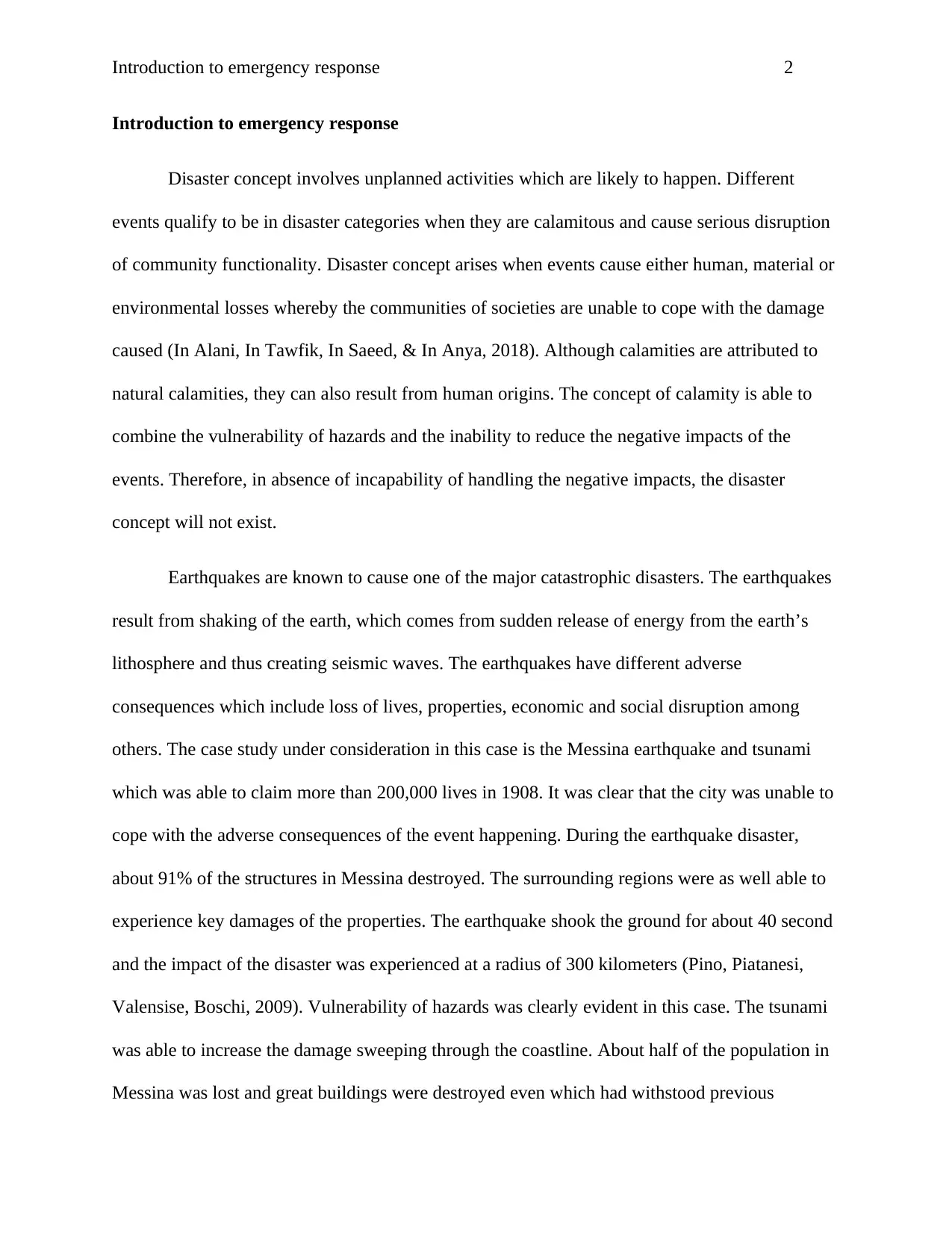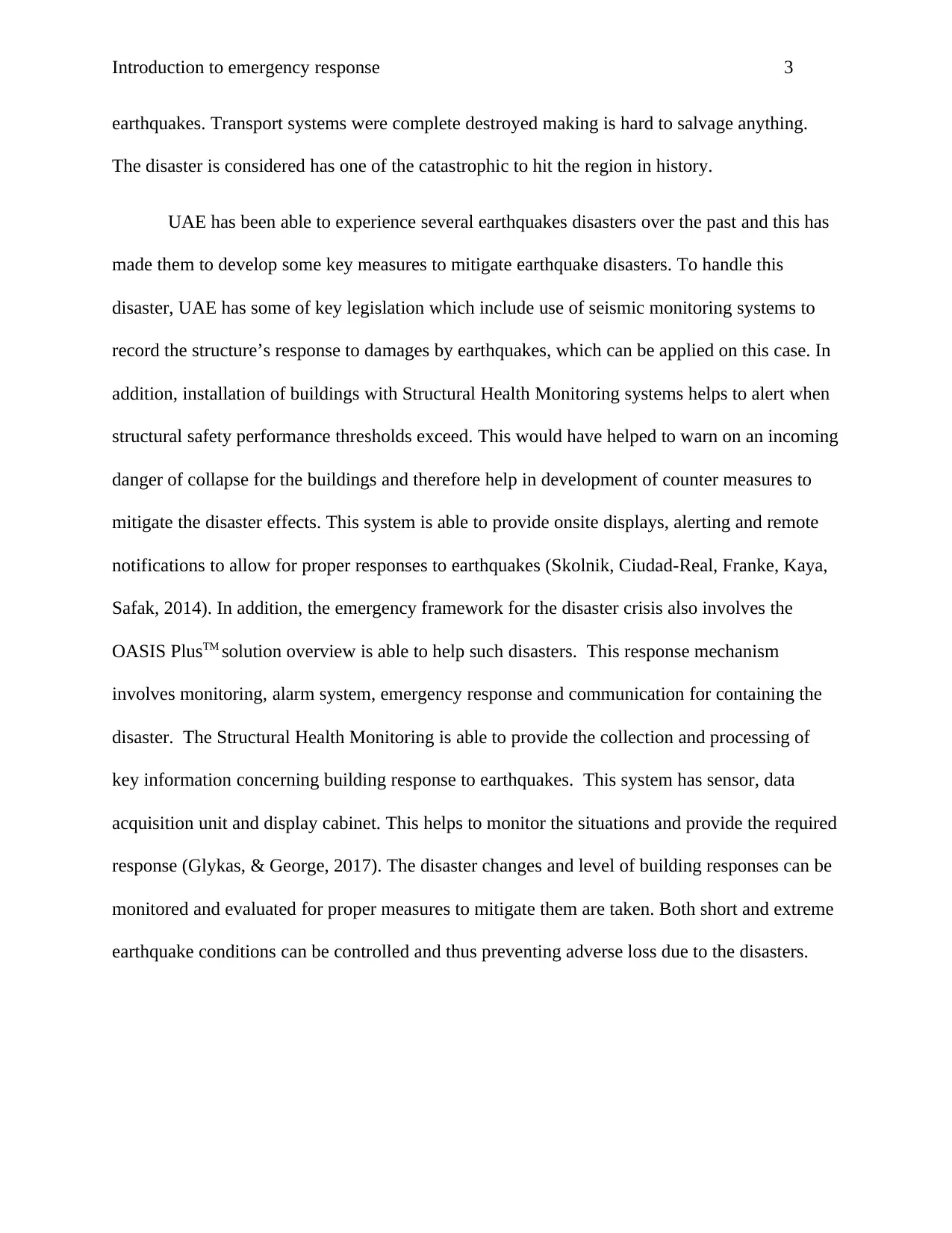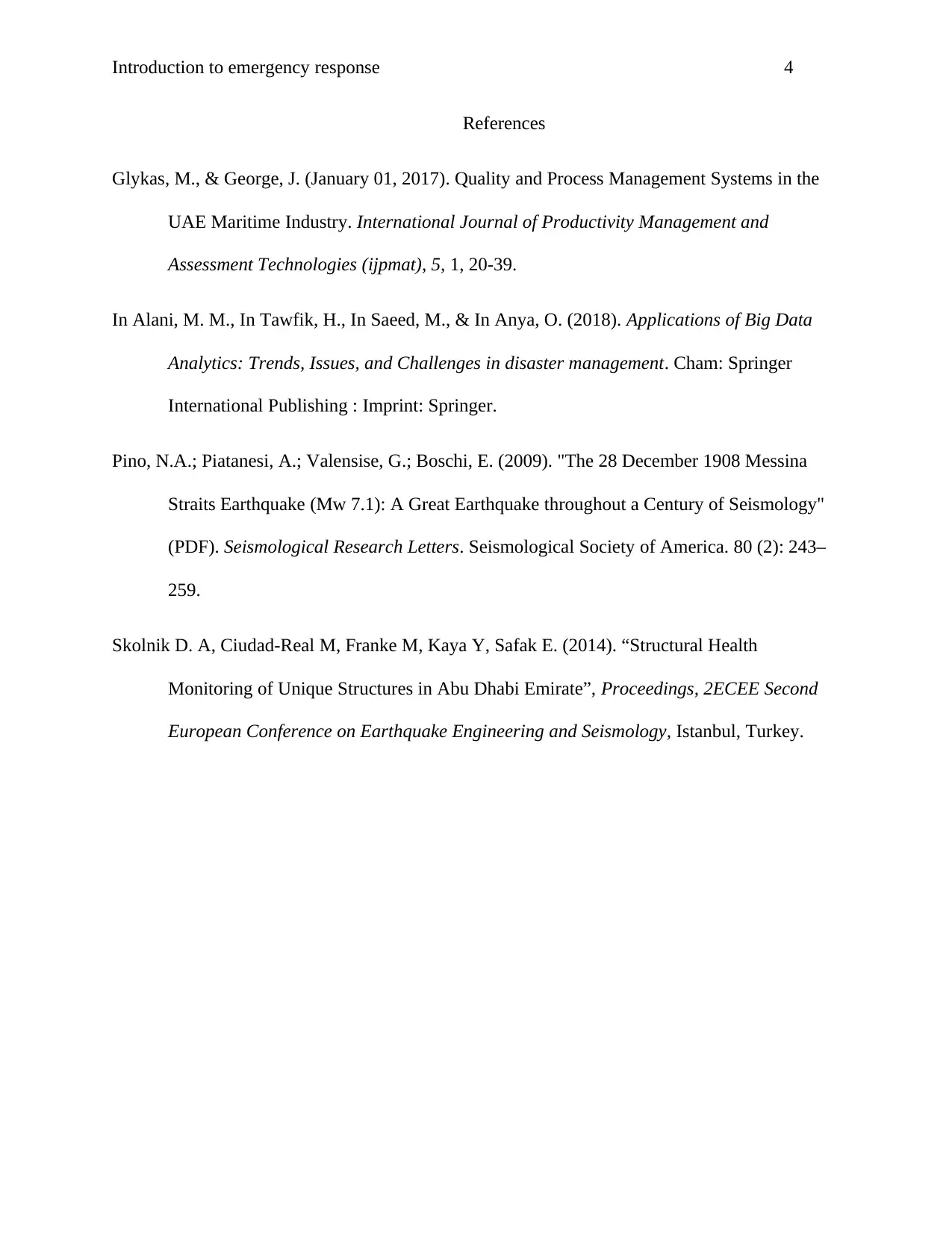Emergency Response: Messina Earthquake and UAE Measures
VerifiedAdded on 2023/06/04
|4
|902
|314
Report
AI Summary
This report delves into the concept of emergency response, using the Messina earthquake and tsunami of 1908 as a case study. It explores the devastating consequences of the disaster, including the significant loss of life and property damage, and highlights the city's inability to cope with the event. The report then shifts focus to the UAE, examining the country's proactive measures to mitigate earthquake disasters, such as seismic monitoring systems and structural health monitoring. These systems are designed to provide early warnings, assess building responses, and facilitate effective emergency responses, including the OASIS PlusTM solution. The report references relevant literature, including studies on big data analytics in disaster management, seismic analysis, and structural health monitoring in the UAE, to support its analysis and recommendations for effective disaster management and mitigation.
1 out of 4








![[object Object]](/_next/static/media/star-bottom.7253800d.svg)